
Each problem on this sheet represents a type of problem you will
need to remember how to do at some point during the three-semester
calculus sequence. Take this home and work on it, with whatever
help you need and can get. If you cannot do almost all of these
problems confidently, with help, then you should consider taking
a prerequisite course to review the material. All of these topics
are on the syllabus of MTH 1764, Precalculus, which is the prerequisite
for MTH 1854, Calculus I. In some cases, these are review topics
and were covered in MTH 1753, Trigonometry.
Many students need an extra review of trigonometry. A list of
trigonometry facts
is available on the Web and a few additional trigonometry problems,
with discussion and solutions, are available on the Web.
1. Describe the graph of this equation in words
and then sketch it: 
2. Describe the graph of this equation in polar coordinates and
sketch it. 
3. Sketch graphs of these two functions and describe their domains
and ranges, asymptotes and intercepts: 

4. Sketch graphs of these two functions, describing in words how
they are related to each other. Find all asymptotes and intercepts
of each. 

5. For the line through 

6. Prove this trigonometric identity: 
7. Find all solutions in 

In 8-12, solve for 
8.
9.
10.
11. 
12. 
13. Solve this system of equations: 
14. Find all points of intersection that have real coordinates:


15. The half-life of a certain radioactive substance is 1200 years.
If 5 grams of it is spilled, how long will it be before only 1
gram is left?
1. Recognize this as an analytic geometry problem - circle or
ellipse since both x and y are squared, ellipse because the coefficient
of the squared terms are different. Use completing the square
separately on the x parts and the y parts to write it in the form
that makes it easy to read the center from the equation. 
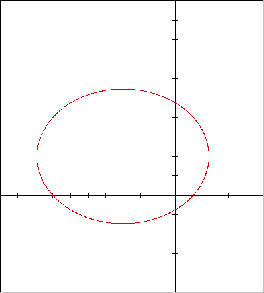
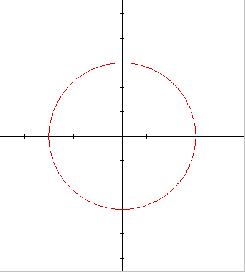
2. Recognize this as a circle with center at the origin and radius
3. (see above right)
3. The cotangent function has domain all numbers except integer
multiples of pi (and the integer multiples of pi are vertical
asymptotes) and range all real numbers. It has no horizontal asymptotes.
The arctangent function has domain all real numbers and range
all numbers between negative pi/2 and positive pi/2. It has no
vertical asymptotes and horizontal asymptotes at negative pi/2
and positive pi/2.
Cotangent function Arctangent function
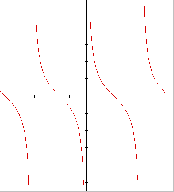
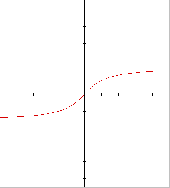
4. The minus three shifts the graph three units to the right horizontally.
The minus in front reflects it across the x axis. Neither function
has a y intercept nor a horizontal asymptote. The x intercepts
are (1,0) for the first function and (4,0) for the second function.
The vertical asymptote is x=0 for the first function and x=3 for
the second function.


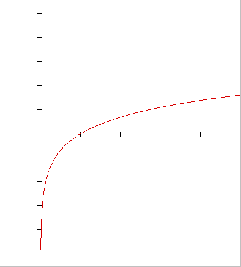
5. Use the point-slope form of a line 

6. 
7.


8. Multiply both sides by the common denominator, which "wipes
out" the denominator since the right side is 0. So x=3 is
the only solution. (Note that x=0 is not in the domain, but that
turns out to not be relevant to finding the solution.)
9. Factor out x and 

10. This is a quadratic-like equation. Solve by substitution,
letting 
11. You might not remember how to factor the sum of two cubics.
Can you remember that x+2 is a factor here, or that -2 is a solution
here? If so, then note that, to find the other factor besides
x+2, you can do polynomial long division. The other factor is

12. Factor out 

13. The method of elimination won't work here. (Do you see why?)
Using substitution, you solve the second equation for one of the
variables, probably for y. Then substitute y=1-3x into the first
equation and solve the resulting quadratic equation for x. That
results in two values for x; -2/5 and 1. Then you substitute each
of these into one of the equations for x and find the resulting
y. After that, you must check your solutions in the other equation.
Both work.
14. This problem also involves simultaneous solution of two equations
in two variables and should be done by substitution. Since both
are already solved for y, it's easy. Just put in one of the equations'
expression for y into the other equation and solve for x. That
results in two values for x. Then you substitute each of these
into one of the equations for x to find the resulting y. After
that, you must check your solutions in the other equation. Both
work.
15. You must use the exponential decay model. There are two (equivalent)
choices. One is to use the base e, and the other is to use the
base ½. I generally use the base e. So the model is 




Last updated January 16, 1998. Send corrections or comments to
Mary Parker, mparker@austincc.edu